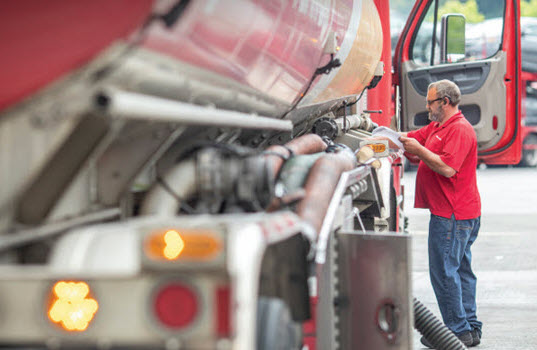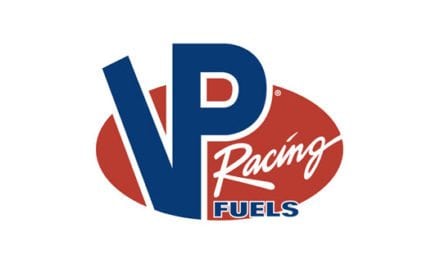By Stephen Bennett
What’s to be done about the driver shortage? Yes, pay and benefits are receiving renewed attention and emphasis, but fuel marketers, and the trucking industry as a whole, are also busily trying to appeal to a younger, more diverse demographic with a message about quality of work life as part of their campaign to shore up the driving ranks.
Driver turnover, chronic for years, is exacerbated by today’s shortage of drivers. Individual companies, trade groups and legislators are working to address the challenge, in part through a bill that would allow younger drivers to operate across state lines. There are about 63,000 truck-driving jobs in the bulk tanker market that are vacant today, according to research and consulting firm Beroe Inc., based in Raleigh, North Carolina. Fuel-tanker truck procurement trends show that large carriers compete with the small and mid-size companies for truck drivers, who pay higher than the industry standards, according to Beroe.
Carriers that haul motor fuels and other petroleum products, as well as carriers of all kinds, are trying a variety of ways to draw people to the driving occupation.
Kenan Advantage Group, North Canton, Ohio, posted this recruitment message on its website this summer: “You are invited! Visit us July 12-15 in Memphis to see what we can offer you as a Professional Driver on our Team! $10,000 sign on bonus for offers made by July 14!”
Pilot Co., seeking at one point to fill more than 300 positions in fuel, DEF and crude oil transport, highlighted quality of work life to potential applicants, pointing out that its drivers “are home more often and proud of the work they do.”
Jordan Spradling, vice president of transportation for Pilot, emailing an update in July, said, “We prioritize taking care of our team members with competitive pay and excellent benefits.” Spradling noted that the company recently celebrated Daniel Abshire, who passed the 40-year mark working for Pilot, by presenting him with a custom made Peterbilt. Abshire’s father had a 40-plus year career with Pilot as well. “
This summer we have attracted more drivers to our fleet who, like Daniel and his father, are looking for a career. We are currently in a busy summer travel season and have seen an increase in traffic over last year. However, we don’t anticipate any fuel shortages at our travel centers across the country. Our strong supply chain and fleet of drivers are essential to ensuring the availability of fuel at our stores.” Spradling also noted, “there is still opportunity for more than 175 fuel drivers to join our team.”
Before it was sold to 7-Eleven in May, Marathon Petroleum Corp.’s Speedway Transport Operations announced that it was hiring 100 drivers over 100 days to fill full- and part-time delivery driving positions in the Southeast United States. “Speedway Transport Operations will provide and pay for a fuel delivery driver training program for drivers with Class A commercial driver’s license and hazmat and tanker endorsements,” the company said. “If drivers with one or more years of fuel delivery experience meet Speedway Transport Operations qualifications, they will receive an additional bonus. Benefits are available immediately upon hire for full-time Speedway Transport Operations employees.”
Health, dental and vision coverage, paid time off (sick, vacation and holiday pay) “are all options to select for drivers and their families,” the company said. “Drivers can build a career with weekly pay, safety bonuses (quarterly and annual), referral bonuses, 401(k) with company match and tuition reimbursement.”
After the sale to 7 Eleven, Marathon Petroleum still has transport truck operations, and so it continues to recruit and retain drivers. “We utilize both proprietary and third-party fleets and continually work to identify ways to best optimize those resources,” said Jamal T. Kheiry, communications manager for Marathon. In its fleet, there are about 550 transports, with over 1,100 drivers who provide service coast to coast, Kheiry said. “We are competing in the same labor market as other companies looking for experienced drivers.”
Work-Life Balance
Competition is intense. “Generally speaking, drivers have more opportunities than they’ve ever had,” Kheiry said. “Our industry specifically has additional regulations,” he said, noting that drivers must have hazmat or tanker endorsements. “Given the scale of our fleet, we have had, and continue to have, a wide range of efforts under way to recruit experienced drivers,” Kheiry said. “We offer very attractive benefits and wages, an employee referral bonus, sign-on bonus and other pay incentives.”
Keeping in mind that word of mouth can be as potent a recruiting tool as any, some employers and trade associations are focusing on making drivers’ working environment, company-wide culture and work-life balance as appealing as they can.
“Without question, our best recruiters are our drivers,” Steve Rush, founder and CEO of Carbon Express, said. “They want the same thing now that they wanted in 1965 when I first began. They want to get paid. They want to be respected. And they want to go home. Hasn’t changed one bit in 55 years.”
Carbon Express, which hauls motor oil among other products, and is based in Wharton, New Jersey, has a dedicated run from Louisville to Kitchener, Ontario, five times weekly. One way, the trip is about 540 miles and can take close to nine hours. Rush wanted the two drivers on the run to be able to go home each night. “So instead of hiring at the ends, I hired in the middle,” he said. “One guy goes and gets it. The other guy takes it to where it’s going.”
Regulatory Relief
 The average age of a truck driver is 49, seven years older than that of the typical U.S. worker, American Trucking Associations President and CEO Chris Spear said. “To stem the growing driver shortage immediately, we urge Congress to consider proposals to remove obsolete regulatory barriers that prevent trucking from replenishing its aging workforce with younger, qualified workers who have received the appropriate training and experience required to operate a commercial motor vehicle (CMV),” Spear told the Senate Commerce, Science & Transportation Committee.
The average age of a truck driver is 49, seven years older than that of the typical U.S. worker, American Trucking Associations President and CEO Chris Spear said. “To stem the growing driver shortage immediately, we urge Congress to consider proposals to remove obsolete regulatory barriers that prevent trucking from replenishing its aging workforce with younger, qualified workers who have received the appropriate training and experience required to operate a commercial motor vehicle (CMV),” Spear told the Senate Commerce, Science & Transportation Committee.
Although 49 states and the District of Columbia allow 18 to 20 year-olds to operate CMVs in intrastate commerce, federal law prevents them driving across state lines, Spear pointed out in testimony before the Subcommittee on Surface Transportation, during a May 11 hearing. ATA supports the DRIVE Safe Act (S.659) as “the most effective and safety-focused solution to the trucking industry’s dire workforce dilemma,” Spear said.
He also cited legislation called the Promoting Women in Trucking Workforce Act (S. 469) in his testimony. According to the bill, women currently make up 47% of the U.S. workforce, but they make up less than 7% of truck drivers. “Through the establishment of a Women of Trucking Advisory Board under the leadership of the FMCSA, this legislation will bring greater attention to the recruitment, retention, training and mentorship of women in the trucking industry,” Spear said.
Another study has placed the percentage of women drivers at about 10%.
Recruiting Women
Asked how she rates the industry’s recruitment of women to drive, Ellen Voie, president of Women In Trucking, based in Plover, Wisconsin, said, “The industry is doing a better job, but when I started Women In Trucking in 2007, people didn’t even track what percentage of their driving fleet was female. And the carriers would just say to me, ‘Oh, we just hire the best person.’ And my response to them was, ‘Oh really? Well, how come your uniforms are all made for men? How come the trucks are designed for men? How come you don’t even have restrooms for women in your terminals?’”
Data compiled by the American Transportation Research Institute, among others, show that women as a group excel as truck drivers, Voie said. “Women are safer drivers, women stay with their carriers longer, there’s less turnover, they’re happier with their income, and so now the industry’s like, ‘Oh wow, this is great—bring us more women!’” Voie said.
Still, she added, “It’s a double-edged sword. We want to bring more women in, but we have to make sure the industry is accommodating and values women. One of the issues that we are really focusing on now is the safety of female drivers. It’s a higher priority for women.”
Carriers can improve safety of women on the job through excellent equipment maintenance that reduces the chance of breakdowns. “Nobody wants to be broken down on the side of the road. And that’s [true] for women and men,” Voie said.
The overall safety culture of a company is another critical consideration. “Where are you sending your drivers?” Voie said. “Are you sending them to a bad part of town that’s dimly lit? To a crime-ridden area?
“If the driver says, ‘There’s a snowstorm coming, I want to pull over’—what’s the company’s reaction?” Voie asked. “If they say, ‘Absolutely. It’s up to you to make those decisions’— that’s the kind of company you want.”
Women In Trucking works with truck stop operators on safety and security, lighting, fencing—making sure that all drivers are safe, not just females, Voie said. “We also have self-defense, self-esteem experts talk at our events about how to carry yourself, situational awareness,” Voie said. The group publishes an anti-harassment employment guide, available to members upon request. It addresses everyday situations in trucking and what to do in cases of inappropriate— or worse—behavior.
The Federal Motor Carrier Safety Administration is conducting a study of crimes against female and minority drivers, Voie said. “We’re looking forward to getting those results, to see where crimes against drivers are taking place. In anticipation of that study, we’re doing our own survey with members— asking female drivers where they feel least safe. Is it at a loading dock, is it at a customer’s, is it in a training situation?”
Dr. Kim Riddle, assistant professor in the School of Nursing and Allied Health at Western Kentucky University, who researches sexual harassment, said, “Women don’t want to go to work and feel like it’s a burden to be there, or that it’s a bad thing to be there.”
To decrease the odds of that, Riddle suggested, companies can ramp up their training in sexual harassment awareness, especially during orientation. “And then once a year, companies need to reiterate that training,” she said.
Diversity Efforts
CarriersEdge, a company in Newmarket, Ontario, is working with Women In Trucking on a diversity inclusion index (www.witindex.org). CarriersEdge operates a program called “Best Fleets” (www.bestfleetstodrivefor.com), which includes a survey, evaluation and recognition of carriers across North America. Carriers must be nominated by one of their drivers.
CarriersEdge works with more than 4,000 carriers, and the Best Fleets program (www.bestfleetstodrivefor.com) was launched in 2009, “so we have a lot data and insight into what the leading companies are doing to not only get, which is secondary, but more appropriately, keep their drivers,” said Chris Henry, vice president of customer experience and recognitions programs.
Some carriers are working to connect with a broader range of ethnic and other communities to increase driver diversity. “In some of our carriers there’s a very high percentage of transgender individuals operating as drivers. It has definitely grown,” Henry said. “I know that we have quite a few drivers who identify all along the LGBTQ+ spectrum who have been with us for many years, but we did not target them directly or use any unique messaging,” Vadim Komarov, director of marketing for ShipEX, said via email.
 Stephen Bennett is an editor and reporter specializing in the fuel and transportation industries
Stephen Bennett is an editor and reporter specializing in the fuel and transportation industries









